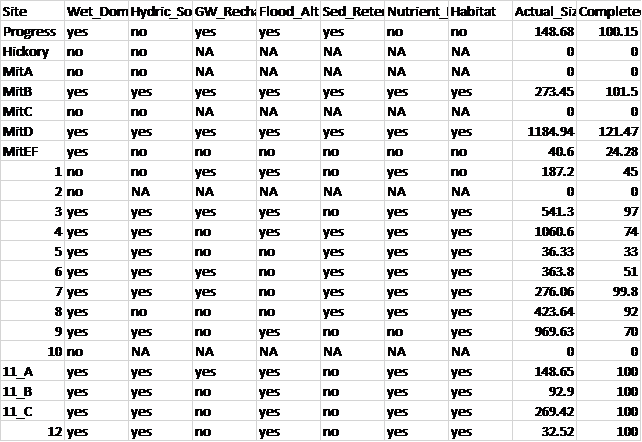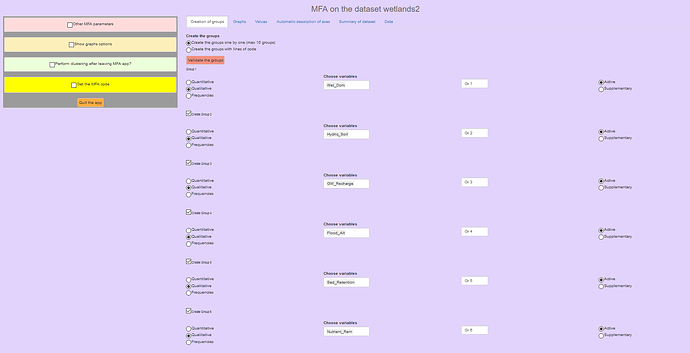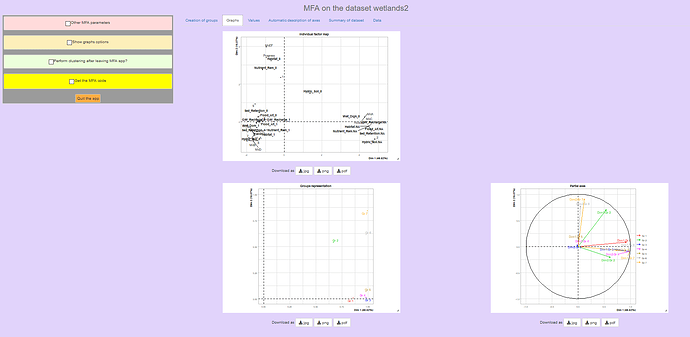I'm trying to do Multiple Factor Analysis for a wetlands study since I have qualitative (yes/no) and quantitative (size in m^2 and %). Previously my data was in binary but I switched it back to yes/no because I thought that might have been part of the problem but I get the same error(s).
When I run:
> setwd("file location")
> wetlands <- read.table("wetlands.csv",
+ header=TRUE, sep=",", dec=".", row.names=1)
>
> result <- Factoshiny(wetlands)
Factoshiny loads and lets me select an analysis type but in its description it says all my variables are quantitative. "The dataset wetlands has 21 individuals, and 9 variables: All the variables are quantitative." and then when I select MFA, I get "ERROR: unused arguments (choices = list(gettext("None", domain = "R-Factoshiny"), gettext("All", domain = "R-Factoshiny"), gettext("Choose", domain = "R-Factoshiny")), selected = partial, inline = TRUE)" and in R the error is "
Listening on http://Factoshiny
Warning: Error in radioButtons: unused arguments (choices = list(gettext("None", domain = "R-Factoshiny"), gettext("All", domain = "R-Factoshiny"), gettext("Choose", domain = "R-Factoshiny")), selected = partial, inline = TRUE) 71: dots_list 70: div 69: conditionalPanel Warning: Error in radioButtons: unused arguments (choices = list(gettext("None", domain = "R-Factoshiny"), gettext("All", domain = "R-Factoshiny"), gettext("Choose", domain = "R-Factoshiny")), selected = partial, inline = TRUE) 71: dots_list 70: div 69: conditionalPanel
"
Attached is my dataset. Any advice would be greatly appreciated!


